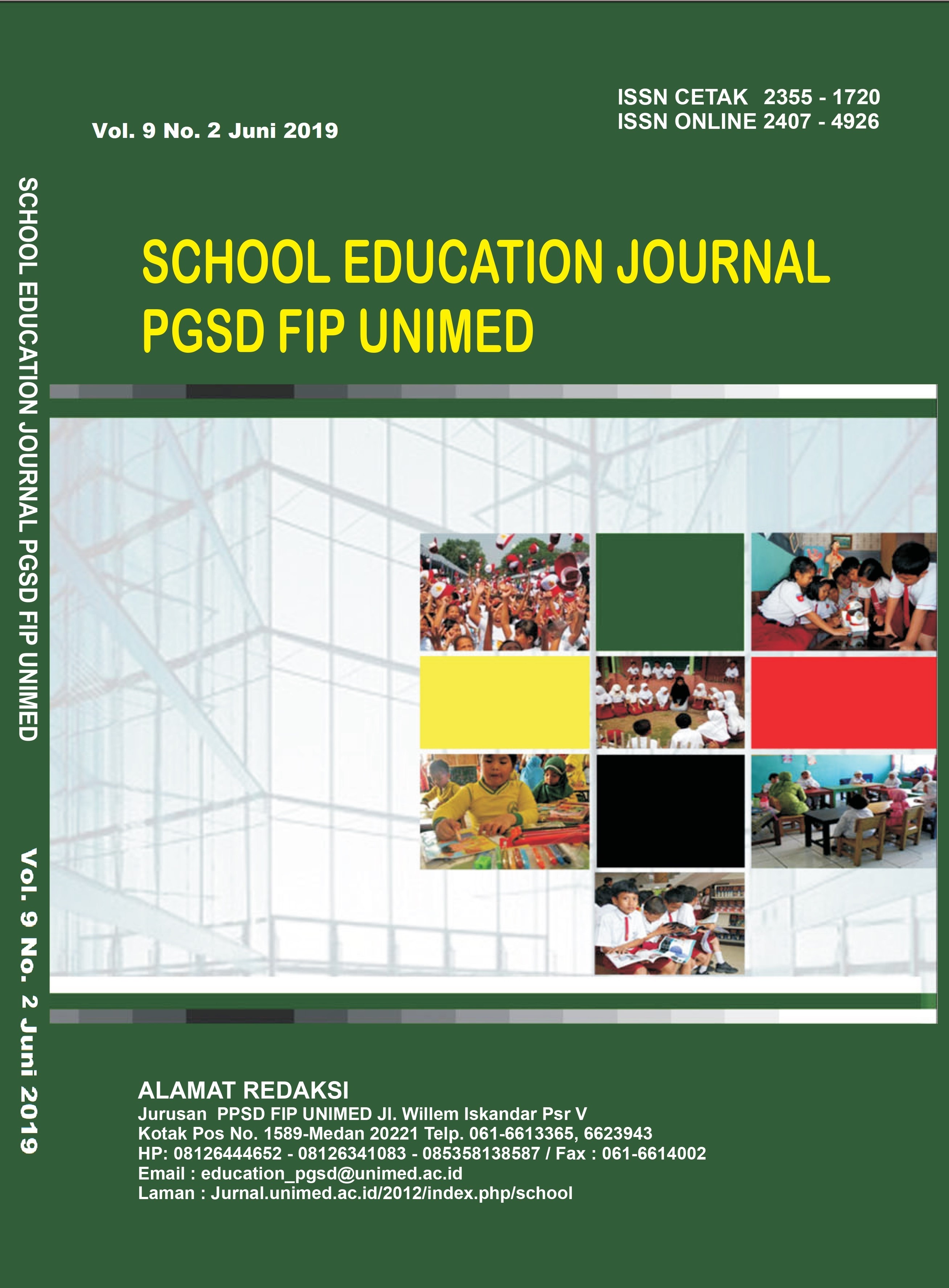UPAYA MENINGKATKAN HASIL BELAJAR IPS MENGGUNAKAN PEMBELAJARAN KOOPERATIF TIPE MAKE A MATCH DI KELAS V SDN 163094 KOTA TEBING TINGGI
DOI:
https://doi.org/10.24114/sejpgsd.v9i2.13710Abstract
The purpose of this study was to describe the process of implementing the Make a Match type of cooperative learning model that can improve student learning outcomes in social science subjects in the time division in Indonesia. This study uses the Make a Match type cooperative learning model as an effort to improve student learning outcomes and make students more active in the learning process. The population of this study was all students of class V, amounting to 36 people with an age range of 11-12 years. The tool used to collect data in this study is test and observation, the results of the study at the pretest obtained in the pre-cycle activities the percentage of classical completeness of students is 59.52%, then in the first cycle to 75.13%. An increase of 15.61% in the first cycle when compared to the pre-cycle activities. After the second cycle was implemented using the Make a Match cooperative learning model in the second cycle, the achievement of students' classical completeness reached 77.11%. The indicator of success in this study is the percentage of classical completeness of students of 75% of the total number of students. Keywords: IPS Learning Outcomes, Make a MatchDownloads
Published
Issue
Section
License
Authors whose manuscripts are approved are approved as follows:
The publication rights for all journal manuscript materials published/published on the SEJ (School Education Journal) E-Journal site are held by the editorial board with the author's knowledge (moral rights remain with the manuscript authors).
The formal legal requirements for accessing this electronic digital journal article are subject to the terms of the Creative Commons Attribution-ShareAlike (CC BY) license, which means that E-Journal SEJ (School Education Journal) has the right to store, transfer media/format, manage in the form of a database, maintain, and publish articles without asking permission from the author as long as the author's name remains as the copyright owner.
Manuscripts published/published electronically are open access for educational, research, and library purposes.

